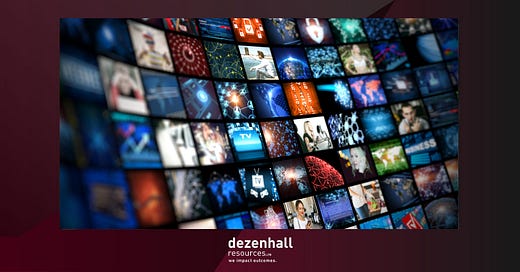Big-budget Super Bowl ads are fun to watch, discuss and debate. They also give us a window into how brands wish to define themselves to the widest, most diverse possible audience. I am interested in how big brands see themselves fitting into the cultural trends of the moment, especially when sectors and companies find themselves in moments of controversy.
I have read and written more than enough on Bud Light, but Bud Light’s "Easy Rounds" ad, in my opinion, was excellent. It nodded at the consumer deselection controversy and then reminded the audience that it's a domestic light beer brand; it's designed for having fun with friends while watching sports.
This Super Bowl ad season featured interesting spots from three "Big Tech" companies with platforms that are ripe for controversy and criticism - Google, Snap, and Microsoft. These ads provided real insight into how these companies are branding themselves and their products in the midst of significant fear, skepticism, and misunderstanding of tech and how it can improve human lives.
Google emphasized AI as a tool for humanization. Google’s "Javier in Frame” commercial featured a legally blind man using AI to document his life via selfies. The tech helps him frame photos, which are very blurry to him, in which he builds a life and eventually a family with his significant other.
Putting aside the fact that Google is very skilled at telling stories like these (it got dusty in my living room during the last 10 seconds of this spot), it's clear what the company is addressing. They are confronting the public's latent fear that AI will replace human activity, making our lives less authentically lived. Javier's experience shows that AI has some very real, very practical applications for enhancing the lives lived in the real world, especially for those living with disabilities or other challenges to day-to-day life.
Snap acknowledges the risks and hazards associated with social media and differentiates its user experience from those of its peers. Snap’s "Less Social Media, More Snapchat" spot straight-up acknowledges that social media has become less social. Snap suggests that the crusade for likes and engagement on rival platforms has moved away from fostering human relationships, relying on algorithms instead of the genuine community interactions that underpinned the rise of Facebook (now Meta).
It's a bold take, and I think it's mostly a smart one. It is nearly a consensus opinion that there are serious mental health risks associated with the youth's use of social networks. With 210 million people suffering from social media addiction and 84% of young adults aged 18 to 29 active on these platforms, the concern is palpable. Why hide from that discussion if you have a compelling way to differentiate your platform from competitors?
The risk for Snap, of course, is that online bullying and social exclusion are also real mental health stressors, and Snap, as a leading communications platform for young people, often finds itself in the middle of such controversies. Will the company succeed in branding itself as a genuine connector of offline friends, or will this effort backfire the next time Snap-fueled cyberbullying ends in tragedy?
Microsoft tells a story of empowerment through its Copilot AI platform. Many ambitious people struggle with two key challenges: procrastination and self-doubt. Microsoft's Copilot “Game Day” advertisement suggests that AI won't replace successful people. It will get them off the couch and increase their productivity. The haters can doubt all they want; Microsoft's AI product will help you prove them wrong.
As an ambitious person who struggles with procrastination and self-doubt, this ad eroded some of my dystopian AI skepticism. If Microsoft (like Google) thinks about AI as a tool to amplify human skill sets, it can combat pessimistic narratives about the rise of our robot overlords.
They will eventually need to engage with the public on proactive steps to combat harmful unintended consequences in order to fully secure public confidence in the future of AI in our daily lives.
The future of AI will be driven by innovators building out the tech and either empowered or constrained by external stakeholders like governments, the media, and consumers. Super Bowl LVIII showed us that the companies building an AI future are beginning to consider and shape the public perception of their work. In my view, it was mostly a good start, but much more conversation and debate lies ahead.





